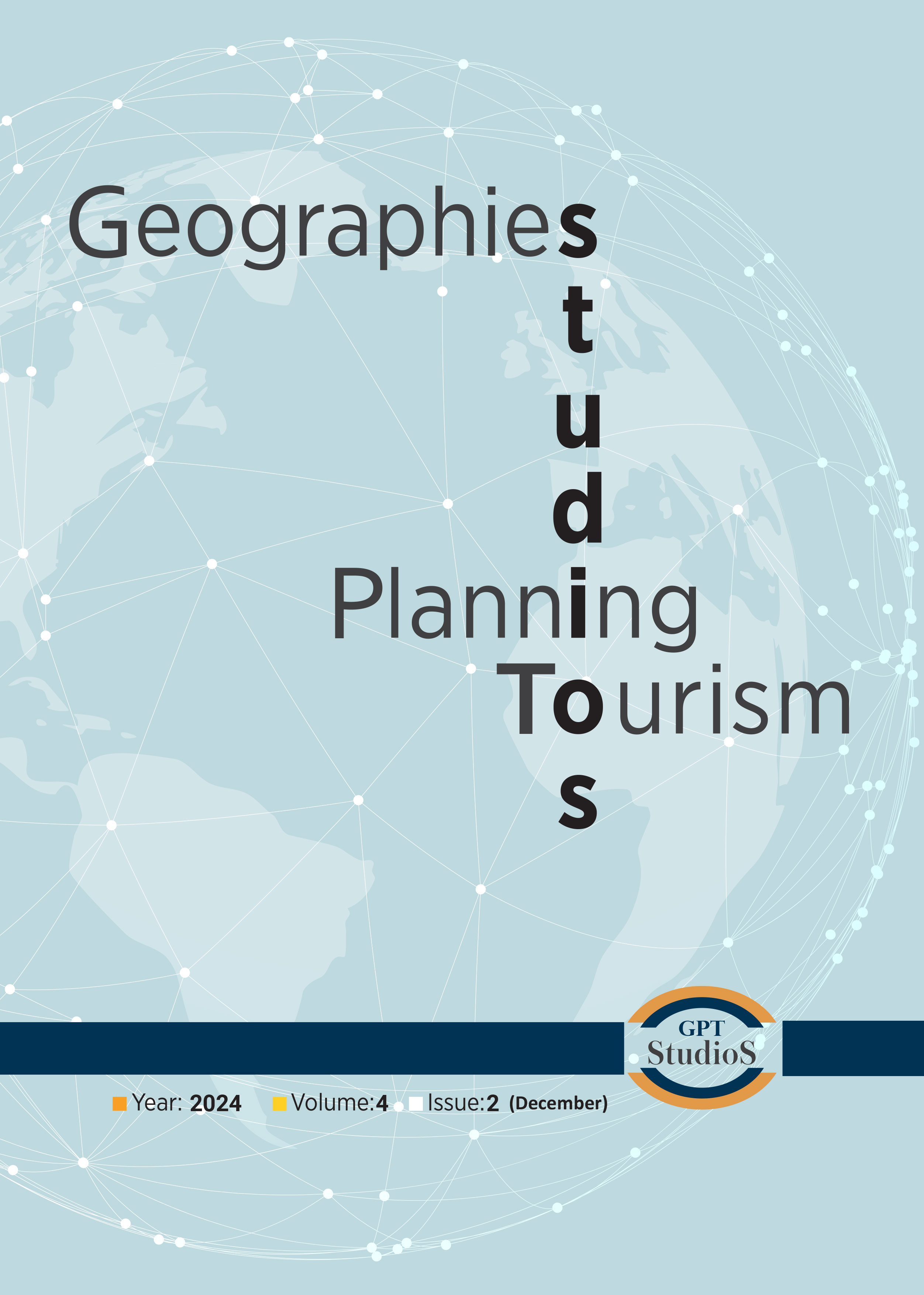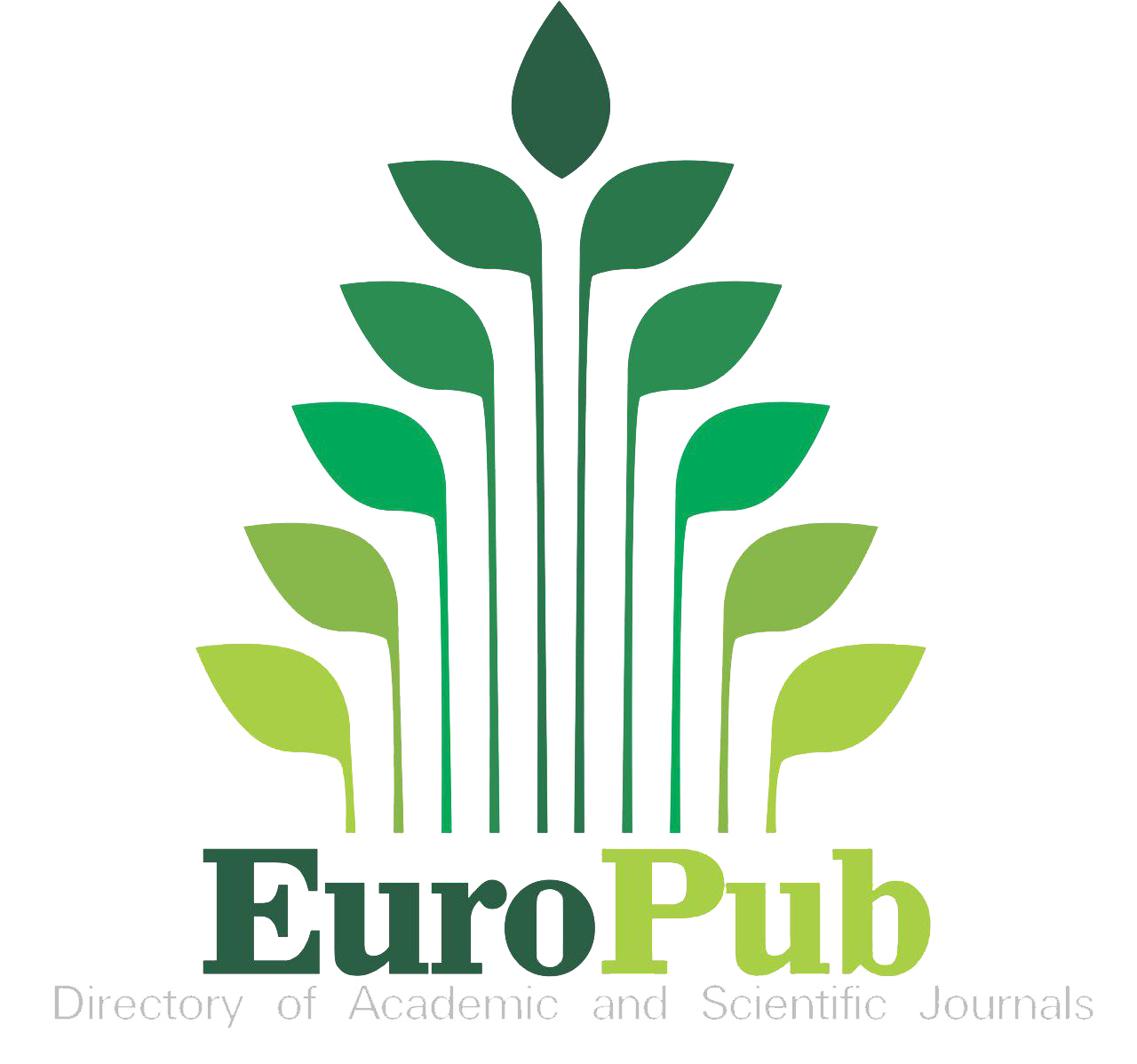
Makaleler Açık Erişimlidir ve Creative Commons Atıf-GayriTicari 4.0 Uluslararası Lisansı ile Lisanslanmaktadır.
Cilt: 1 Sayı: 1 - 2021
| EDITÖRYAL | |
| 1. | Editorial Emine Cihangir, Kübra Cihangir Çamur, Mehmet ŞeremetSayfalar I - VI |
| ARAŞTIRMA | |
| 2. | A Study on the Analysis of Tourists' Destination Comments: Comparison of Greece-Georgia-Bulgaria Aydın Ünal, Sinan Baran Bayar, Onur Çelen, Muharrem Tunadoi: 10.5505/gpts.2021.98608 Sayfalar 7 - 20 |
| 3. | Trends Observed in the Numbers of Rainy Days in Turkeys River Basins and Planning-Tourism Policy Suggestions Samet Bilir, Faize Sarışdoi: 10.5505/gpts.2021.43153 Sayfalar 21 - 31 Yağış değişkenliği, tatlı su yenilenebilirliği ve hidrometeorolojik kökenli afetler açısından önemli bir indikatördür. Yağış değişkenliği kapsamında ele alınan parametrelerden biri olan yağışlı gün sayıları, yağışın mevsimselliği ve şiddetini belirlemede değerlendirilir. Türkiye akarsu havzalarında yağışlı günlerde 1960lardan bu yana gözlenen eğilimlerin analiz edilmesini amaçlayan bu çalışmada, Mann-Kendall korelasyon testi ile 100 farklı istasyonun yıllık ve mevsimlik yağışlı gün sayısı serileri analiz edildi. Yıllık, kış ve ilkbahar yağışlı gün sayılarında istatistiksel olarak anlamlı azalma eğilimleri belirlendi. Bu eğilimler ağırlıklı olarak ülkenin kuzeybatı ve güney kesimlerinde bulunan havzalarda öne çıkar. Aynı zamanda kapalı havzalarda ve Türkiyenin en büyük havzası olan Fırat Havzasında da azalma eğilimleri dikkate değerdir. Yağışlı gün sayılarındaki azalma; yağışlı dönemin daralması ve/veya kurak dönemin genişlemesi, toplam yağışın azalması ya da yağış şiddetinin dolayısıyla sağanakların frekansının artması gibi hidroklimatolojik sonuçlar ortaya çıkarabilir. Tüm bu süreçler, Türkiye akarsu havzalarında su ve suyla ilişkili doğal afet yönetiminin önemini vurgulamaktadır. |
| 4. | Analysing Climatic Characteristics for the Suitability of Some Tourism Types in the case of Erzurum City Centre Süleyman Toydoi: 10.5505/gpts.2021.65375 Sayfalar 32 - 41 According to United Nations World Tourism Organisation (UNWTO), tourism offers all over the world cultural, environmental and social (peace and security) benefits, as well as provides employment (creating jobs), economic growth and development. Tourism accounted for 1/10 of jobs created in the world, 10% of the Worlds GDP (1.6 trillion by 2030 1.8 US Dollars), 7% of all exports, and 30% of all service exports in the world in 2017. Tourism grows the fastest with oil, food and automotive industries all over the world by increasing the number of destinations and income sources of most developing countries and supporting several sectors from construction to agriculture or telecommunications. In such a vitally important sector, competition among destinations is inevitable and its economic contribution is related to the service quality and the high revenues. In such a high competition, every type of potential or resource is given to the benefit of the tourism sector and used in promotional materials even, marketing and branding efforts e.g. quality of the snow cover or sun and beaches. Climate characteristics are vitally important for tourism to ensure both loyalty and branding and incomes. For nearly 50 years several climate indices on tourism have been developed to show the advantages of climatic characteristics at a given tourist destination. This study aims to analyse the climate of Erzurum city, a winter destination, through Climate and Tourism Information Schemes (CTIS) based mainly on bioclimatic comfort conditions as well as effective climatic parameters on tourism differently from other indices. Results show that even though bioclimatic comfort values address extreme cold stress in the winter tourism season, the area is suitable for winter tourism when considering other climatic parameters. It can be stated as a conclusion that a unique tourism climate index to Turkey should be developed by taking into account the prevalent tourism types mainly winter and 3 S tourism. |
| 5. | The Tourism Potential of Çayönü Tepesi and Hilar Rocks from the Perspective of Archaeo-tourism and Geo-tourism Savaş Sarıaltundoi: 10.5505/gpts.2021.87597 Sayfalar 42 - 53 Çayönü Tepesi, one of the outstanding Neolithic settlements of Anatolia, and Hilar Rocks with their well-preserved karst shapes are located approximately 6 km southwest of Ergani district in Diyarbakır province. Çayönü Tepesi is one of the rare settlements identified in Anatolia, Levant, Mesopotamia and Zagros regions with an uninterrupted stratigraphy from the beginning of the Pottery Neolithic Period to the first half of the Pottery Neolithic Period. Çayönü Tepesi and the rock tombs on the Hilar Rocks next to it are substantial tourism destinations with a cultural heritage identity. However, the Hilar rocks are also important in terms of their geological heritage value, both with their natural site identity and their karst¬ic shapes. This study evaluates the karstic shapes of the Hilar Rocks in terms of geo-tourism and offers suggestions to improve the tourism potential. It also aims to evaluate and present the archaeo-tourism and geo-tourism potential in the context of the natural relationship between the Çayönü Tepesi Neolithic settlement and the Hilar Rocks, thus emphasizing the importance of the cultural and geological heritage of the region. |
| DERLEME | |
| 6. | Global Distribution Systems and Airline Companies Ebru Bağçı, Merve Aycandoi: 10.5505/gpts.2021.76486 Sayfalar 54 - 62 |











